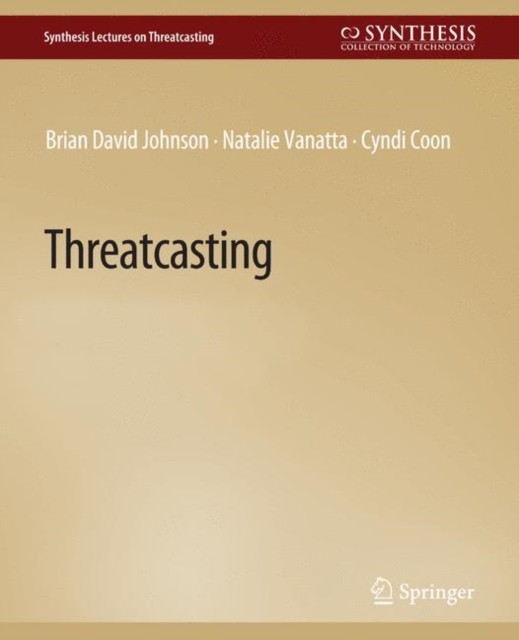
Threatcasting PDF
by Brian David Johnson, Cyndi Coon, Natalie Vanatta
Part of the Synthesis Lectures on Threatcasting series
Description
Impending technological advances will widen an adversary's attack plane over the next decade.
Visualizing what the future will hold, and what new threat vectors could emerge, is a task that traditional planning mechanisms struggle to accomplish given the wide range of potential issues.
Understanding and preparing for the future operating environment is the basis of an analytical method known as Threatcasting.
It is a method that gives researchers a structured way to envision and plan for risks ten years in the future.
Threatcasting uses input from social science, technical research, cultural history, economics, trends, expert interviews, and even a little science fiction to recognize future threats and design potential futures.
During this human-centric process, participants brainstorm what actions can be taken to identify, track, disrupt, mitigate, and recover from the possible threats.
Specifically, groups explore how to transform the future they desire into reality while avoiding anundesired future.
The Threatcasting method also exposes what events could happen that indicate the progression toward an increasingly possible threat landscape.
This book begins with an overview of the Threatcasting method with examples and case studies to enhance the academic foundation.
Along with end-of-chapter exercises to enhance the reader's understanding of the concepts, there is also a full project where the reader can conduct a mock Threatcasting on the topic of "the next biological public health crisis." The second half of the book is designed as a practitioner's handbook.
It has three separate chapters (based on the general size of the Threatcasting group) that walk the reader through how to apply the knowledge from Part I to conduct an actual Threatcasting activity.
This book will be useful for a wide audience (from student to practitioner) and will hopefully promote new dialogues across communities and novel developments in the area.
Information
-
Download - Immediately Available
- Format:PDF
- Publisher:Springer International Publishing
- Publication Date:01/06/2022
- Category:
- ISBN:9783031025754
Other Formats
- Paperback / softback from £49.15
Information
-
Download - Immediately Available
- Format:PDF
- Publisher:Springer International Publishing
- Publication Date:01/06/2022
- Category:
- ISBN:9783031025754







